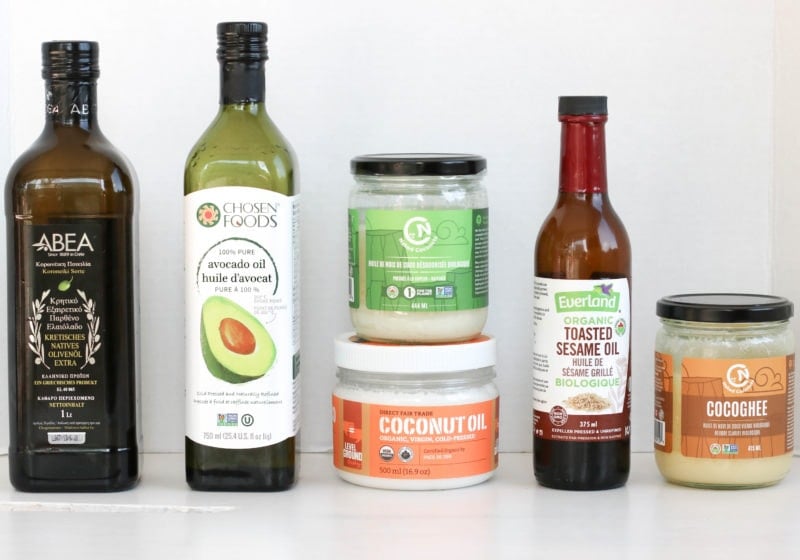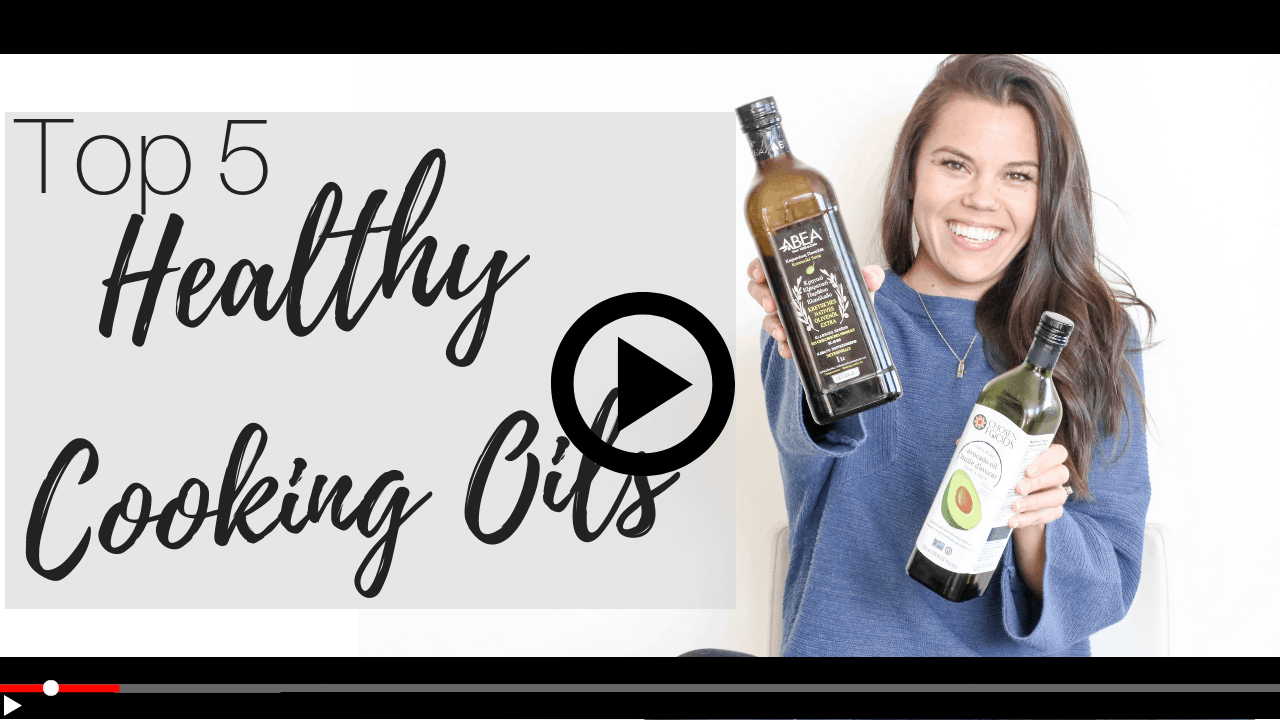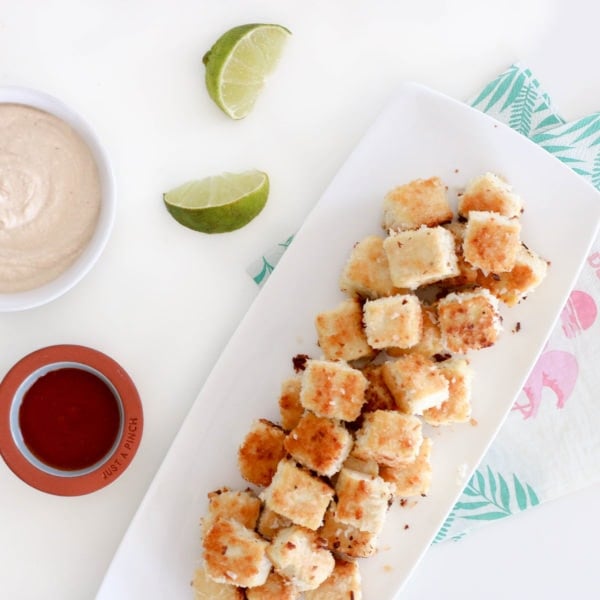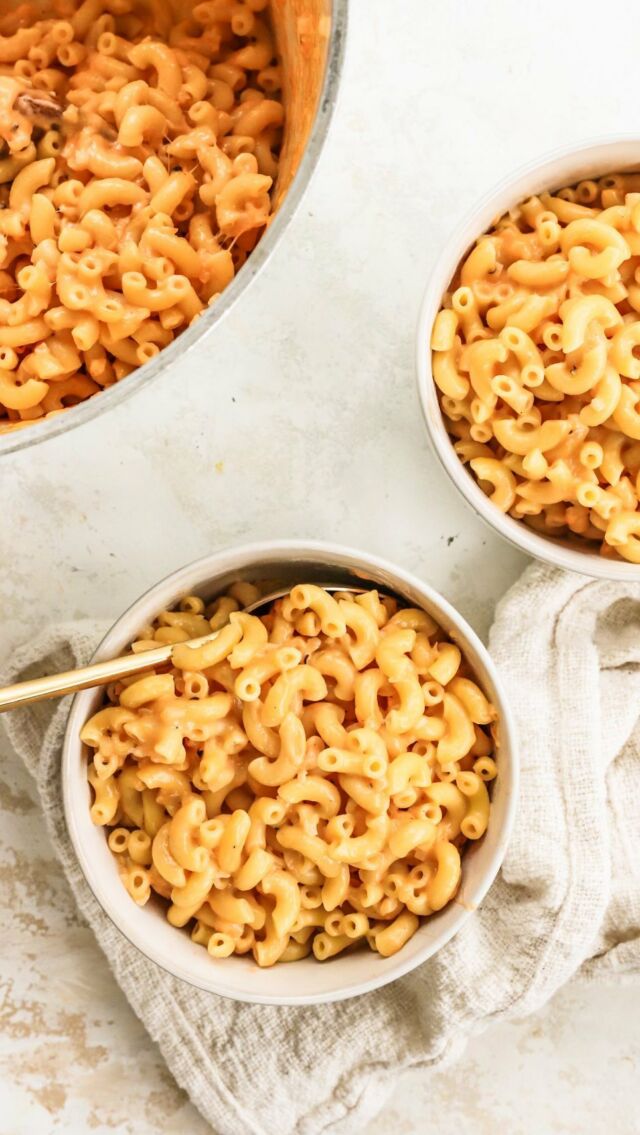Cooking oils are something most of us use daily. But with so many to choose from it can be confusing to say the least! Keep reading for my list of seven cooking oils and when and how to use them!

As a Registered Dietitian, I hear this question A LOT! Cooking oils are something most of use daily, but with so many different options to choose from, it can be so confusing to know what the best cooking oils are!
When it comes to choosing a healthy cooking oil, there are a few things you want to consider
The type of oil and what it is derived from
The smoke point (the heat at which the oil starts to burn)
What you’re using the oil for
Price (this can really vary by type!)
In this post, I’ll be breaking all of that down and including some of the health benefits of the best cooking oils, their best uses, and when to actually avoid some of them in a review of these seven oils
- Olive oil
- Avocado oil
- Grapeseed oil
- Canola oil
- Coconut oil
- Ghee (clarified butter)
Choose Plant-Based Oils Most Often
When it comes to choosing between plant or animal derived fats, plants are typically the way to go. They are higher in monounsaturated and polyunsaturated fats and can help reduce inflammation. Here are few reasons we want to include dietary fats:
- Essential for the absorption of vitamins A, D, E, and K
- Satiety factor – keeps us full and satisfied longer after eating and carries flavor molecules
- Can reduce inflammation (particularly Omega – 3 fatty acids founds in fatty fish, walnuts, flax seeds, hemp hearts and chia seeds)
- Promotes blood sugar balance
Smoke point of Cooking Oils
The smoke point is the temperature at which oils begin to smoke (burn). At this point they begin to break down, lose their nutritional properties, and may start to create toxic or carcinogenic compounds. I’ve listed the smoke points for each oil in the list below!
Click Below to watch “Cooking Oils Comparison)”
Methods of Extraction (Processing)
In order to get the oils into a form we can use, they fats have to be extracted from their source. This is generally from a nut, seed or fruit. There are different methods of extraction, which can impact the taste and quality of the oil.
Cold-Pressed
Cold pressed oils are extracted by using a mechanical press. As the name states, these oils are extracted at a lower temperature of 49C/120F or lower (temperature may vary slightly between countries) . This makes for a slower process, but a higher quality oil with more of the nutrients retained. These are generally higher quality oils, which the price point will reflect. This method is also more environmentally friendly as no chemicals are used in this process.
Expeller-Pressed
This method is also done using a press, but at a much higher pressure which creates friction and heat. This would be considered a moderate heat method leading to some degradation of the nutritional compounds but still yields a good quality product! Like the cold pressed method, no chemicals are used here.
Chemical Solvents
This method used chemical solvents instead of mechanical pressing to extract oil. This method is quicker and produces a higher yield, so oils obtained this way tend to be less expensive but are of a lower nutritional quality. Most commercial vegetable oils are produced this way – if you don’t see cold or expeller pressed on the label, this is likely the method used.
With this in mind, here is my list of the seven best types of cooking oils compared!
Extra Virgin Olive Oil
Smoke point: 320-375°F (Medium)
Price: $0.26/oz
$4.12 USD /16 oz
Benefits
- High in monounsaturated fats, which have been shown to lower blood pressure, decrease LDL (bad) cholesterol, and raise HDL (good) cholesterol.
- Contains phytochemicals that dilate blood vessels, prevent inflammation and prevent the formation of blood clots.
What it’s best used for:
- Note that filtered olive oil is best for cooking and unfiltered should be used as a finishing oil (without heat) to retain the flavor and nutrients.
- Great for making flavourful salad dressings, vinaigrettes and marinades.
- Choose extra virgin or virgin, over ‘light’ olive oil, which has been refined and has fewer nutrients.
- Refined olive oil, which has a higher smoke point, is a better all-purpose oil including sautéing and stir-frying, however has lost some of it’s nutritional properties through further processing.
Avocado Oil (Refined)
Smoke point: 450-500°F (High)
Price: $0.44/oz
$7.49 USD/ 16.9oz
Benefits:
- High in monounsaturated fats that can keep blood pressure and cholesterol levels in check, reducing your risk for heart disease.
What it’s best used for:
- Has an earthy taste that can be used for salad dressings, dips, and marinades.
- High smoke point makes it perfect for barbecuing, roasting, searing, browning and stir-frying at higher heat.
Grapeseed Oil
Smoke point: 420°F (Medium-High)
Price: $0.20/ oz
11.10 USD/ 24 fl OZ
Benefits
- Hi in polyunsaturated fats (PUFA).
- Neutral flavor
- High smoke point
Downfalls
- Higher ratio of omega-6, which can block the absorption of omega-3 fatty acids.
What it’s best used for:
- Its mild flavor makes it a great multi-purpose oil. Use it for stir-frys, sautées, dressings, and dips.
Coconut Oil
Smoke point: 350°F (Medium) for unrefined/virgin coconut oil – 450°F (High) for refined coconut oil
Price: approx $0.40/Fl Oz
$6.69 USD/ 15 fl oz.
Benefits:
- Polyphenols that have potential antioxidant, anti-inflammatory and anti-bacterial benefits.
- Although high in saturated fat, the type (medium chaing triglycerides) are easier for our body to break down and use for energy than animal based saturated fats.
Downfalls:
- Higher in saturated fat than other plant oils. Use it in moderation.
What it’s best used for:
- Best for light sautéing, sauces, and baking because it doesn’t burn as easily as liquid oils.
- Good replacement for other solid fats like butter or shortening
- Choose unrefined coconut oil (cold-pressed) for more nutrients. This variety has a sweet, nutty flavor perfect for tropical dishes.
- Choose refined for higher heat cooking and if you’re trying to avoid the coconut smell and flavor
Ghee (Clarified Butter)
Smoke Point 450F – 485F (high)
Price $1.24/oz
$ 19.81 USD/ 16 oz
Benefits
- Milk solids removed, better tolerated for those with lactose intolerance
- buttery flavor but has a much higher smoke point than butter
Downfalls
- Higher in Saturated fat than most plant oils
- More refined
What it’s best used for
- Sitr-Frying, baking, roasting or cooking at higher heats
- As a substitute to butter, lard or shortening in baking
- To get a rich buttery flavor (makes a nice topping for popcorn!)
Flaxseed Oil
Smoke point: 225°F (Low)
Price: $ 1.12/oz
$17.99/16 fl. oz
Benefits
- Best source of omega-3’s and high in monounsaturated fats for heart health.
What it’s best used for:
- Use for salad dressings, marinades, and dips (no heat should be applied to this oil as it can destroy the healthy fats)
Canola Oil
I included this one because it’s often asked about but I generally don’t recommend canola oil because of it’s high omega 6 fatty acid content and the processing method to extract it which is typically high heat chemical extraction. It is, however, a lower cost oil and access is definitely something to consider when we look at our overall diet. If this is what’s affordable it’s totally ok! And if possible buy cold pressed.
Price Approx $0.10 USD/Fl oz $4.99 USD/ 1.42 L
Smoke point: 400°F (High)
Benefits
- High in monounsaturated fat and omega-3, low in saturated fats.
- Long shelf life
- More economical
Downfalls
- Often chemically extracted
- Higher proportion of omega-6s, which can block the absorption of omega-3s and lead to inflammation.
What it’s best used for:
- Versatile because of its neutral flavor & high smoke point.
- Baking, stir-fry, sautéing, and roasting.
- Can also be used to coat a pan or grill.
Concerned about GMO’s?
If you’re looking to avoid GMO’s in your diet, keep in mind that corn, soy, and canola oils are more commonly genetically-modified. Check the label for non-GMO, organic varieties of these oils.
So there you have it. The every day oils we use in our house are olive oil for pretty much anything that wont’ be heated above 350F and refined avocado oil for any high heat cooking. Other than that I use coconut oil on occasion, mostly for the flavor or if I’m looking for a plant based sub to butter in certain recipes (because of it’s texture), I use butter or ghee when I’m looking for that specific buttery flavor (mmmmm popcorn), and then others when the occasion calls!
What are the staples in your house?
I hope you found this breakdown useful! I’ve put together my fave recipes using the different oils below. Let me know in the comments below which one you’re looking forward to trying!
Happy Eating!
xo Lindsay
Recipe Roundup
Coconut Crusted Tofu Bites (Ghee)
Coconut Cream Coffee Popsicles (Coconut Oil)
Baked Almond Crusted Chicken Fingers with Greek Yogurt Honey Mustard Dipping Sauce (Avocado Oil)
One Pan Bacon & Egg Breakfast Hash (Avocado Oil)
One Pan Turmeric Lemon Rice with Kale and Seared Chicken (Olive Oil)
Kale and Hemp Pesto (Flaxseed Oil)









DeeDee says
Chicken fingers with honey mustard dip is the one I want to try.
Lindsay says
Awesome! Let me know what you think of them Dee Dee! They’re a favorite in our house for sure!